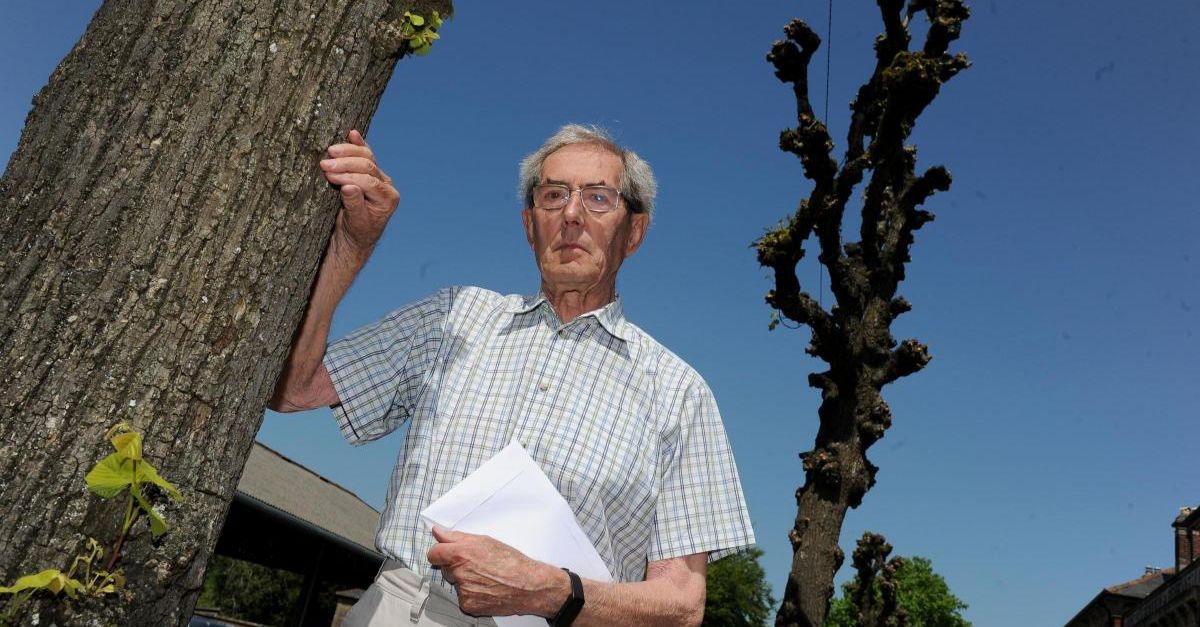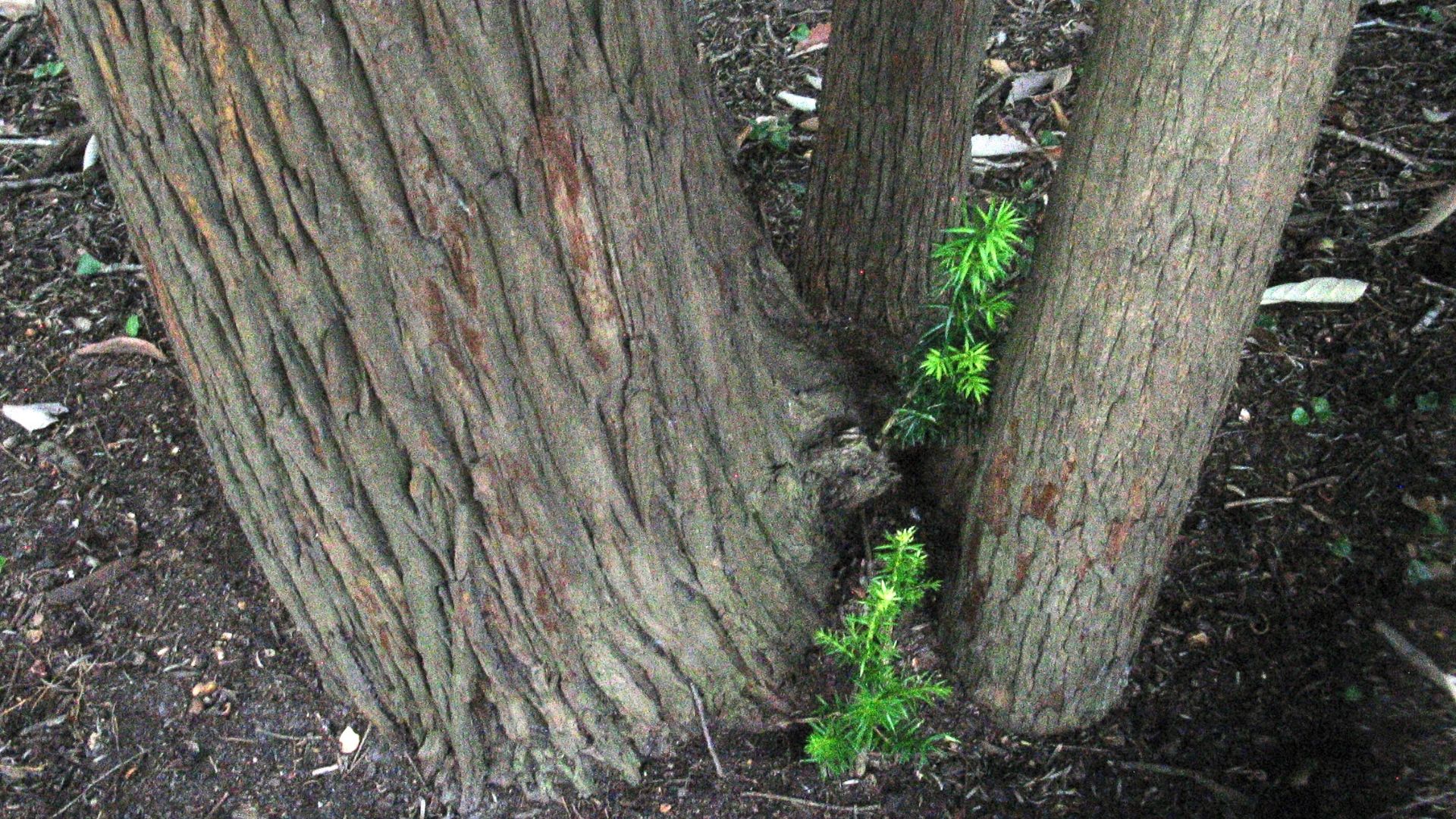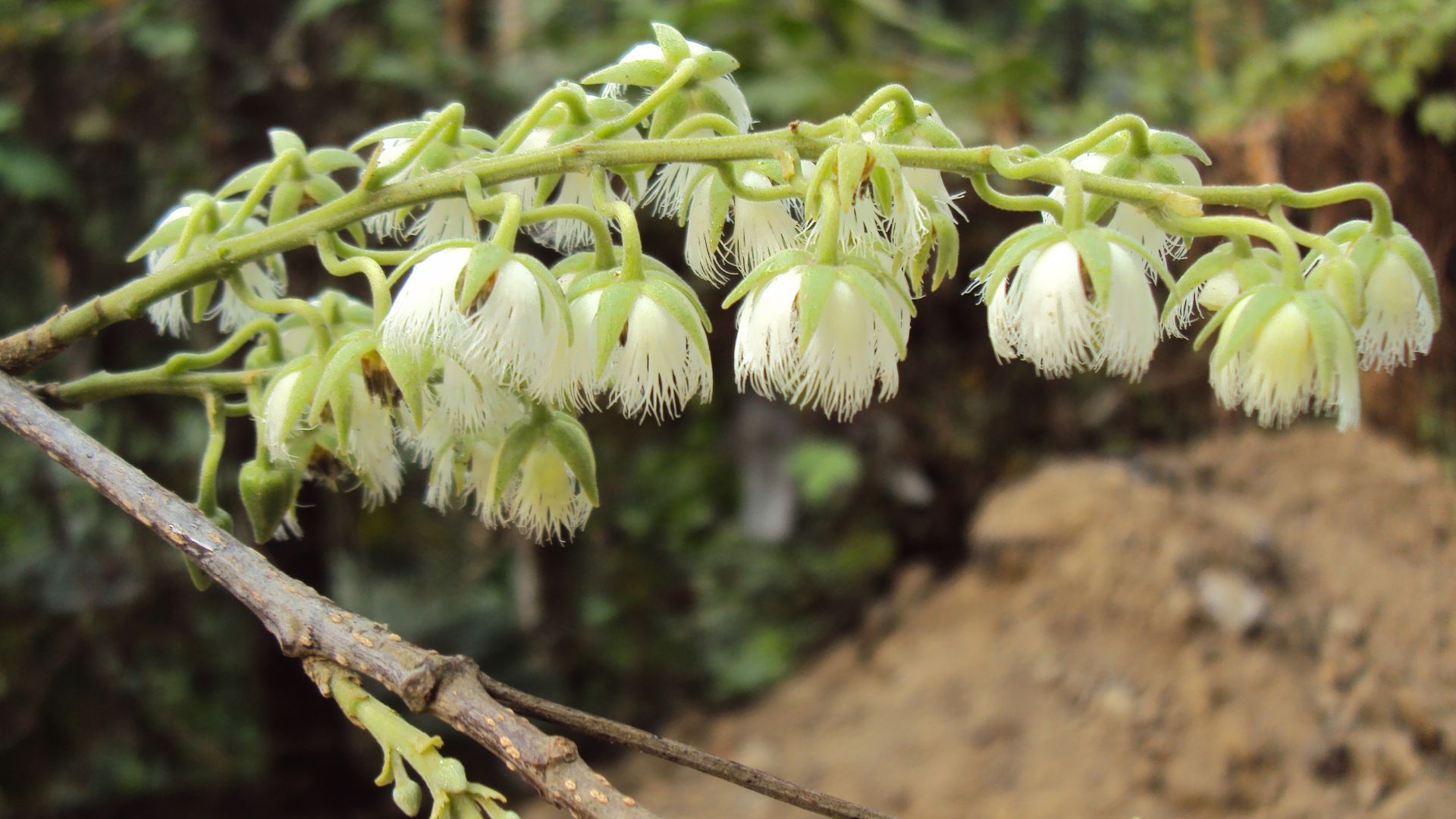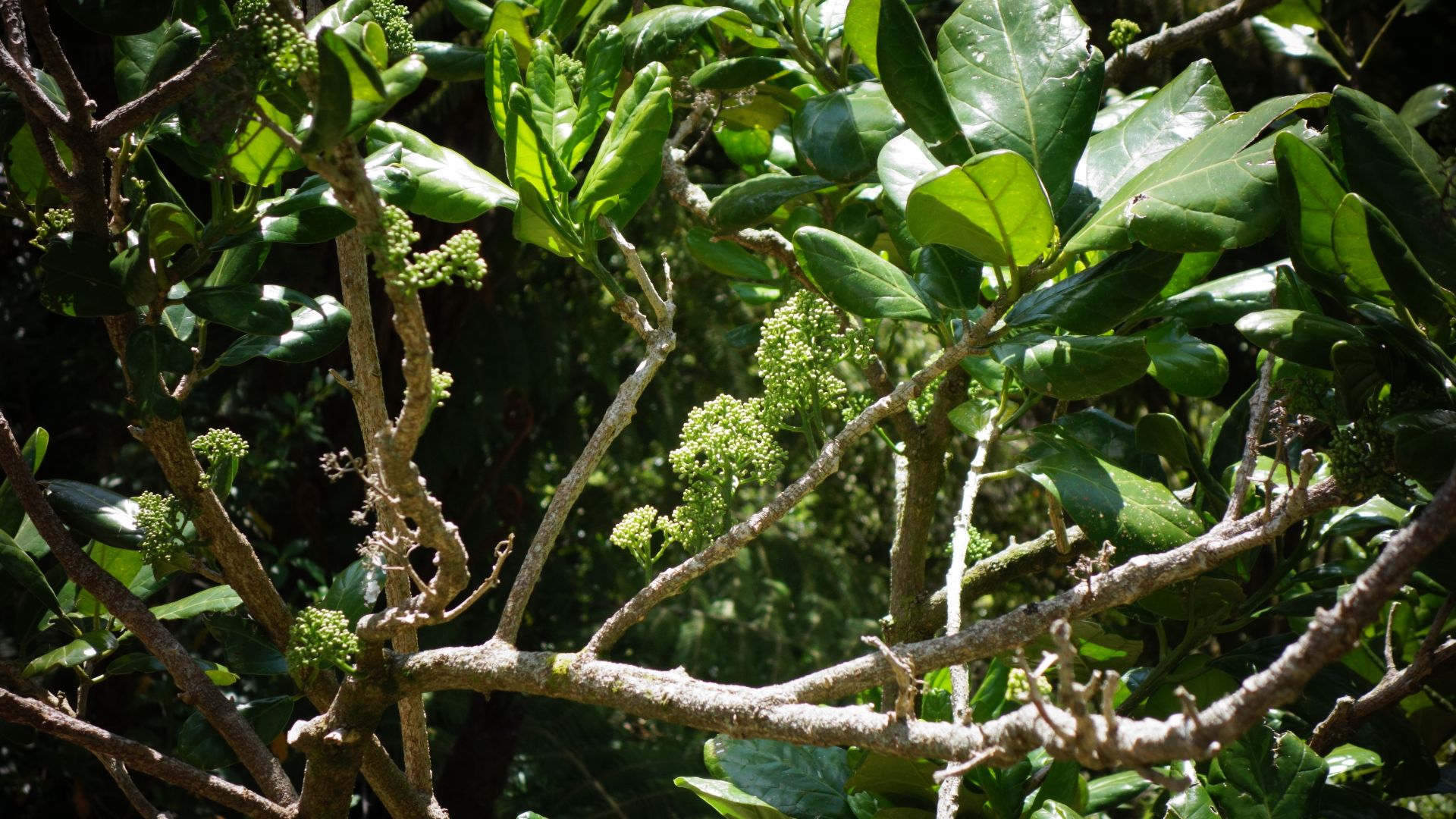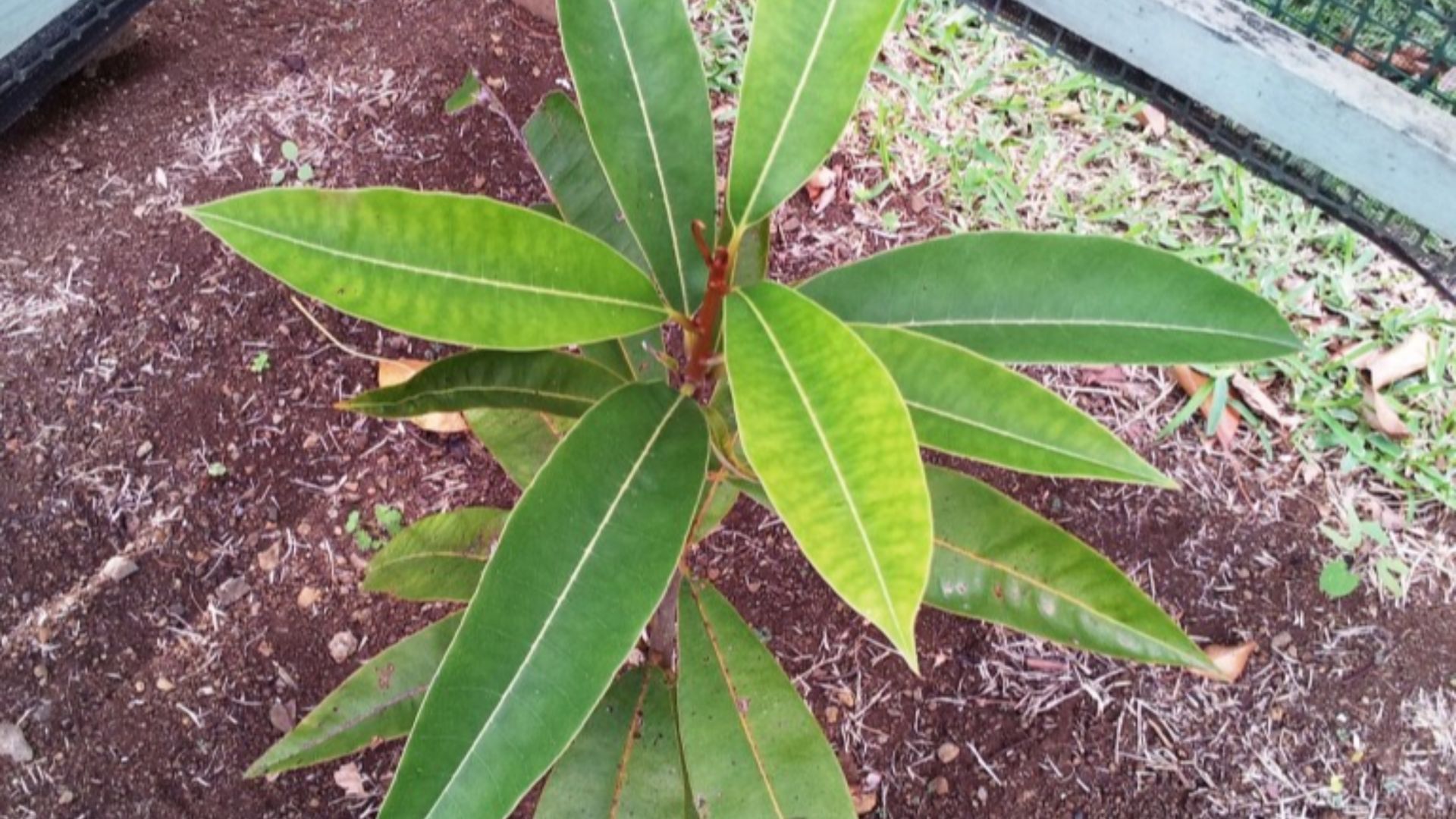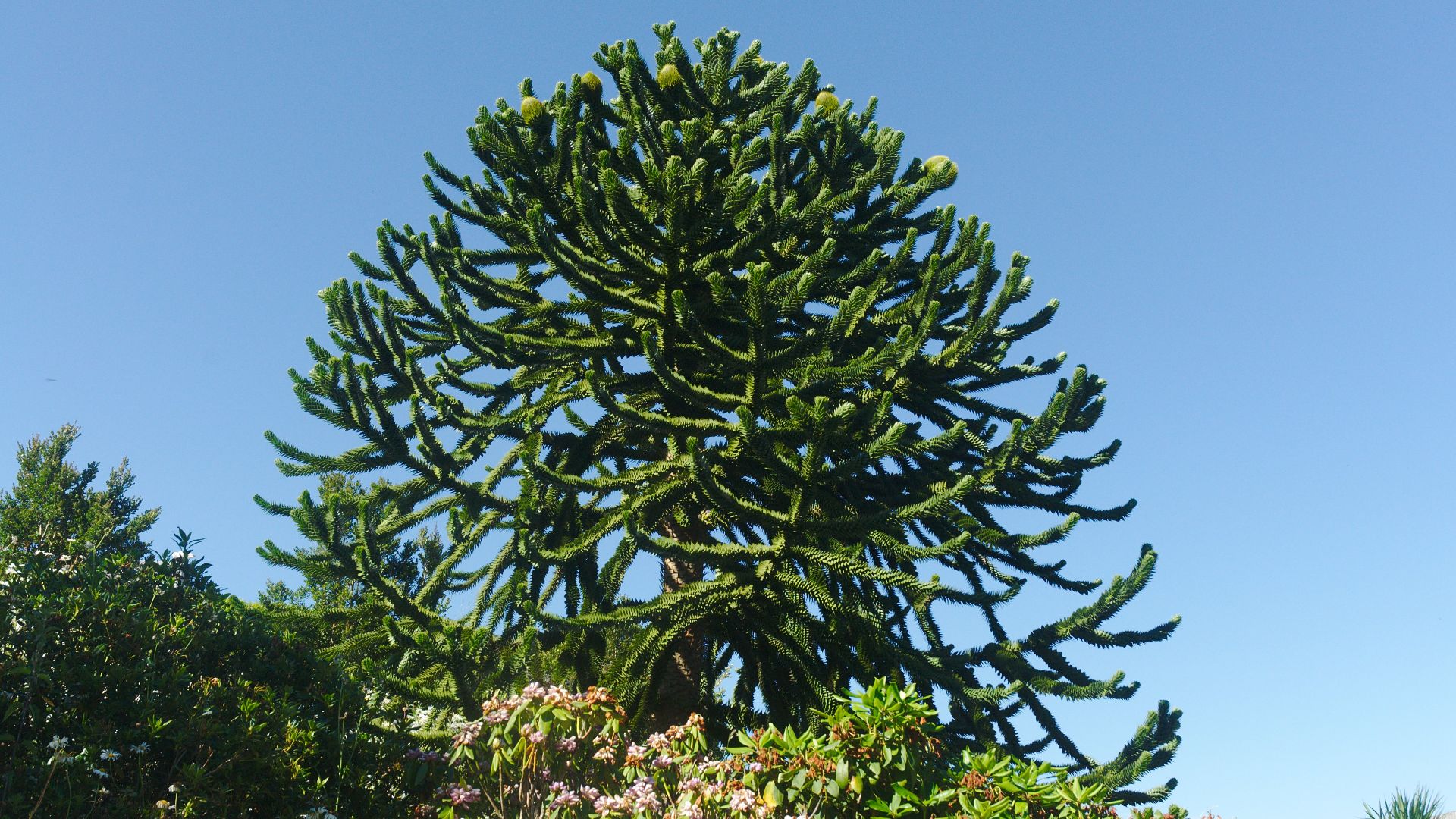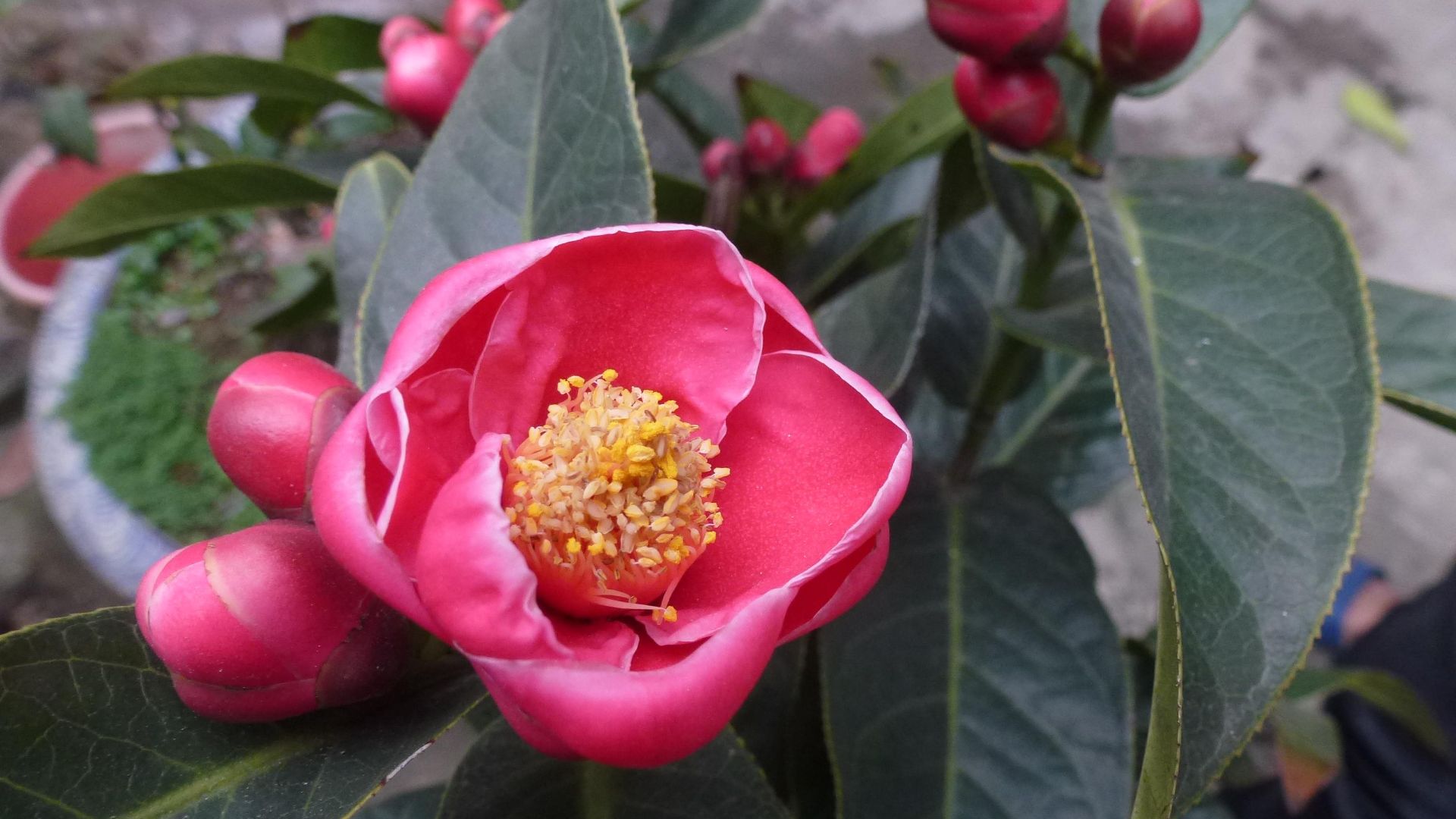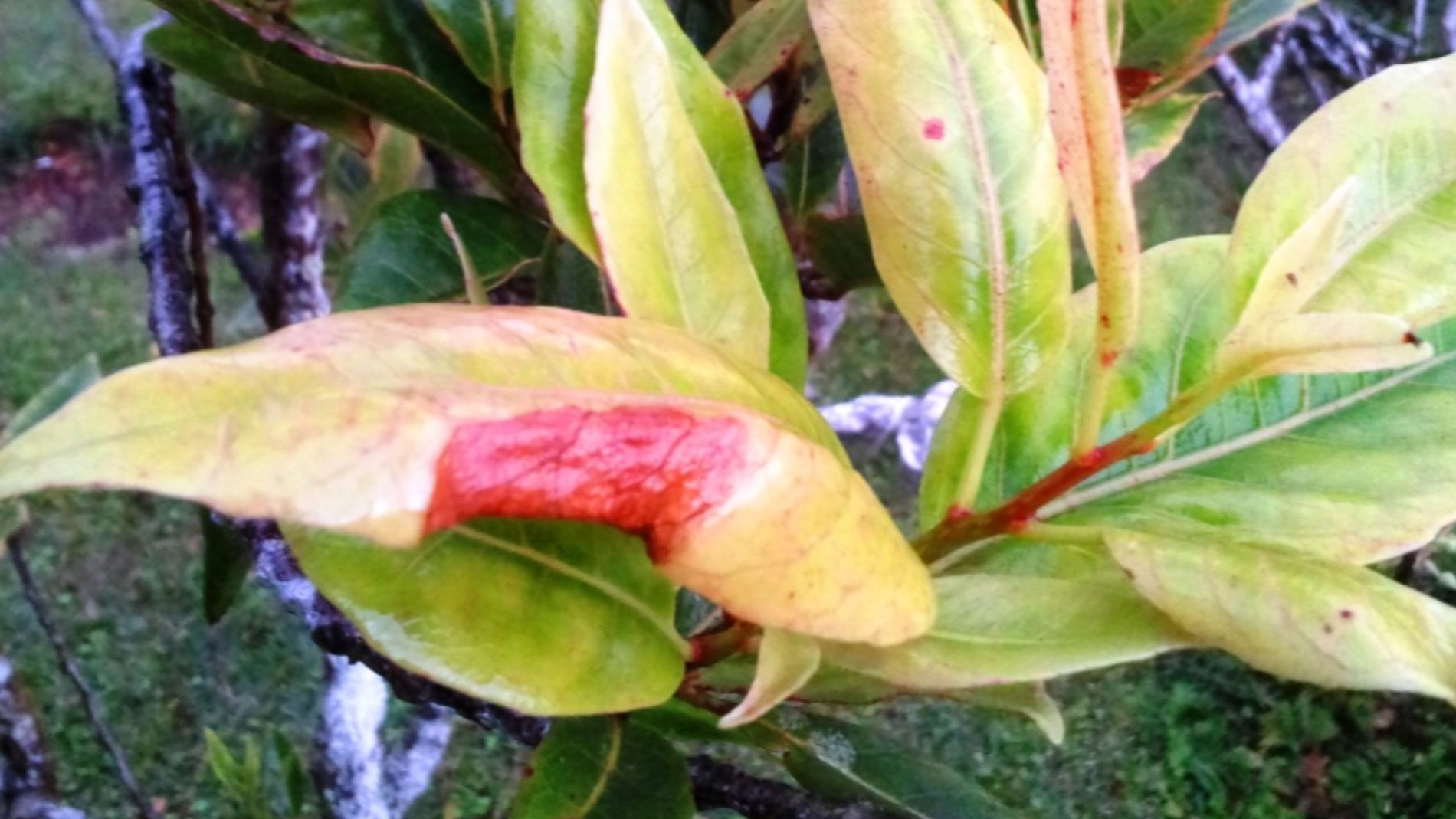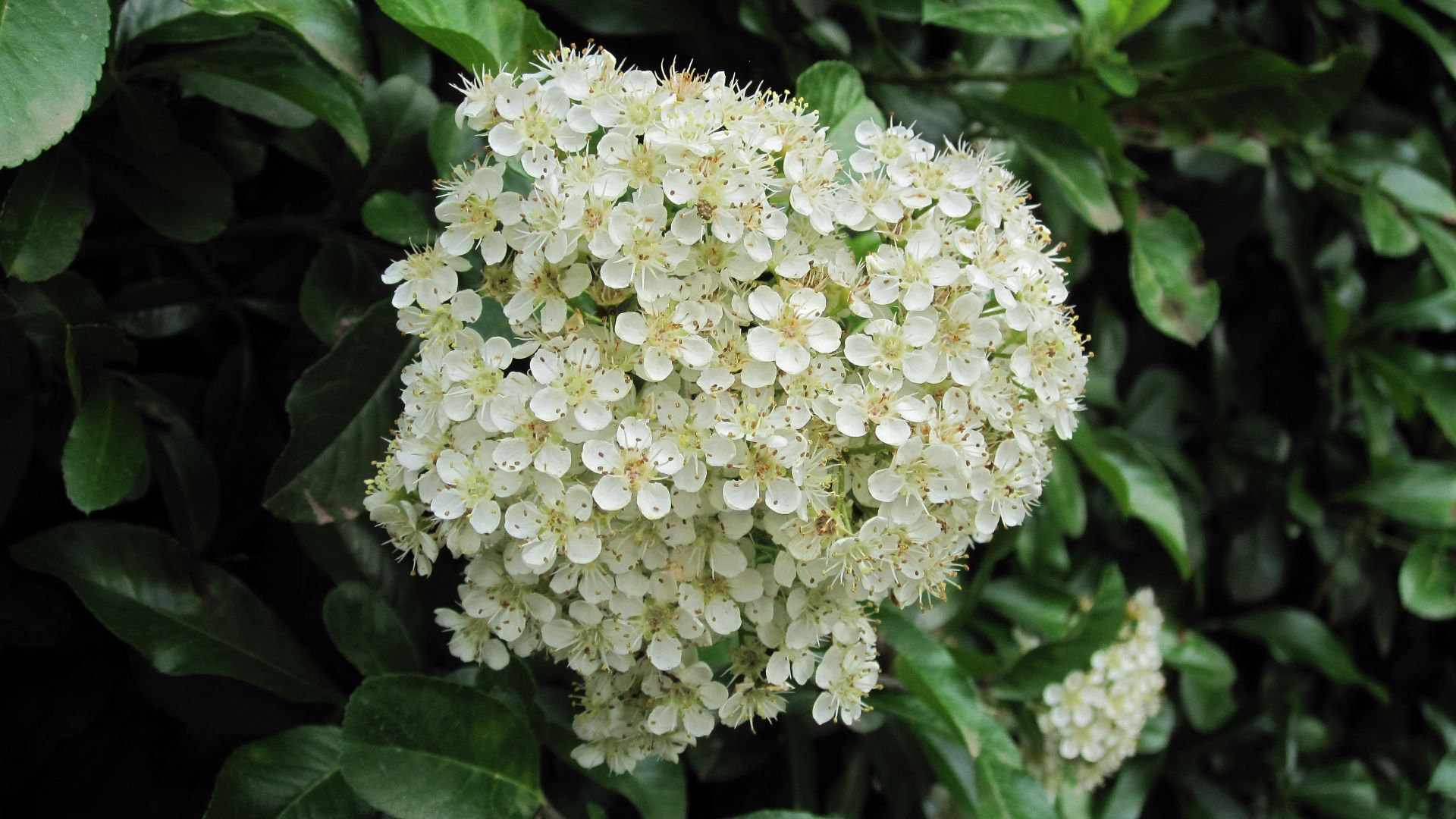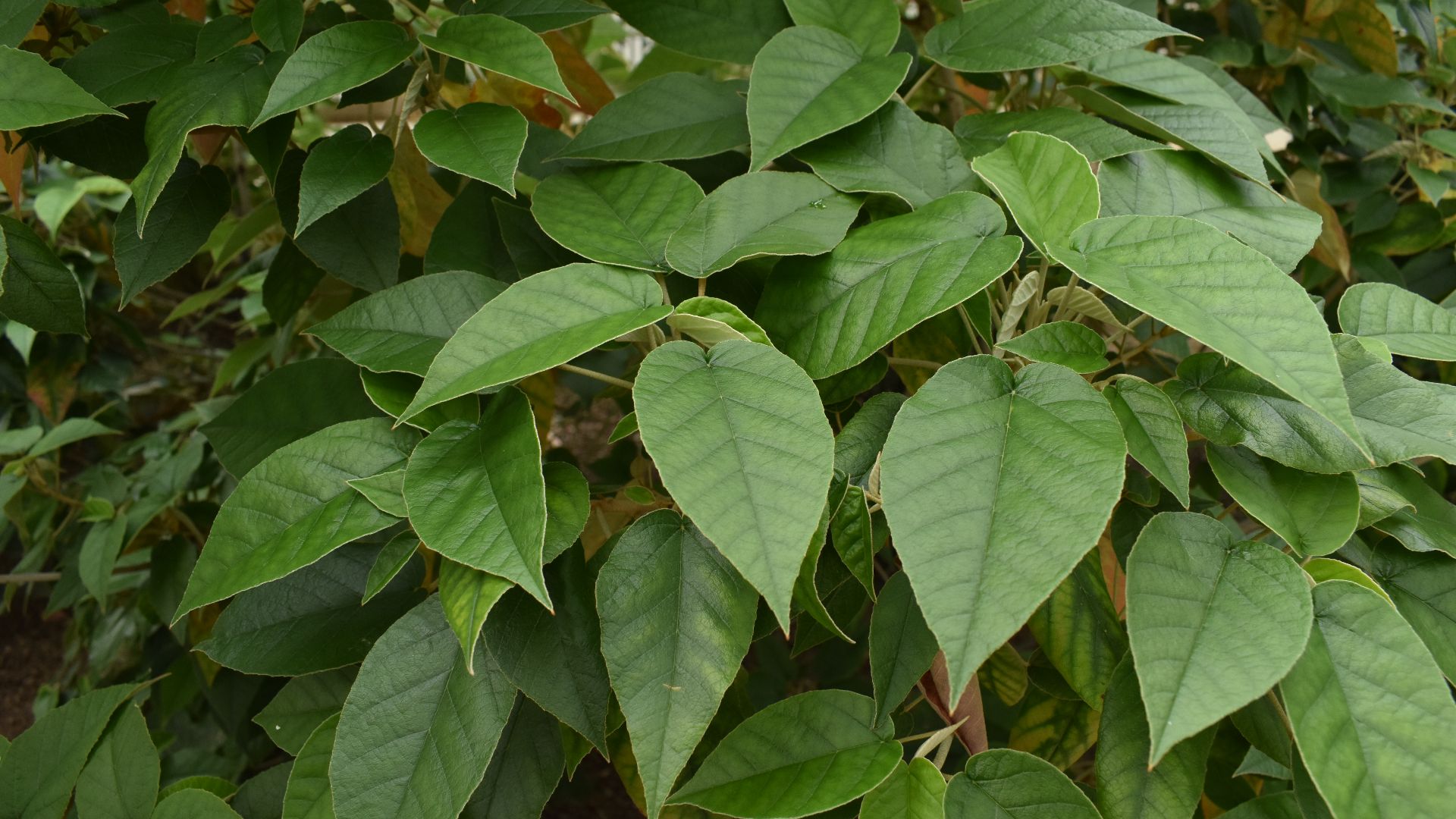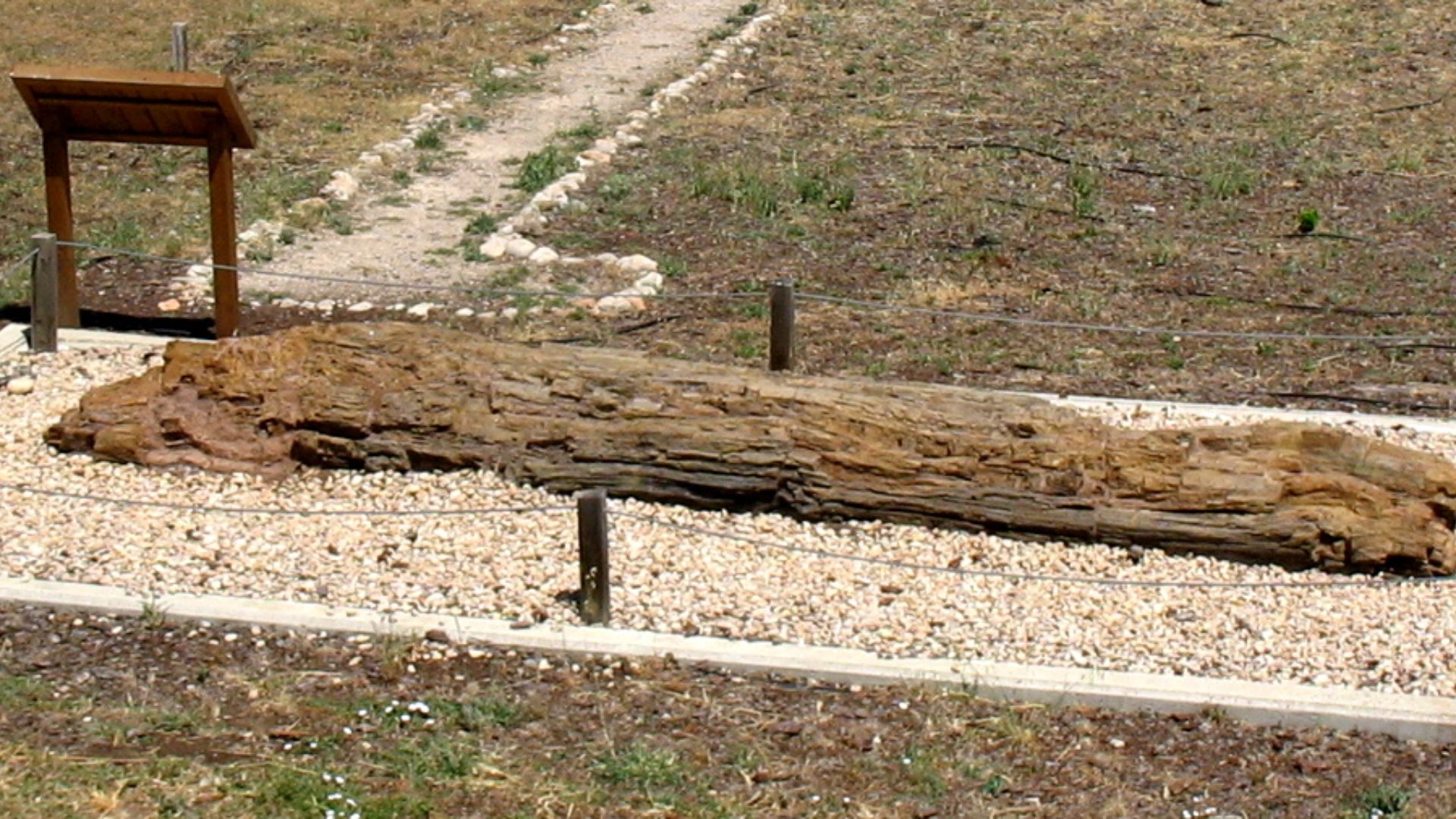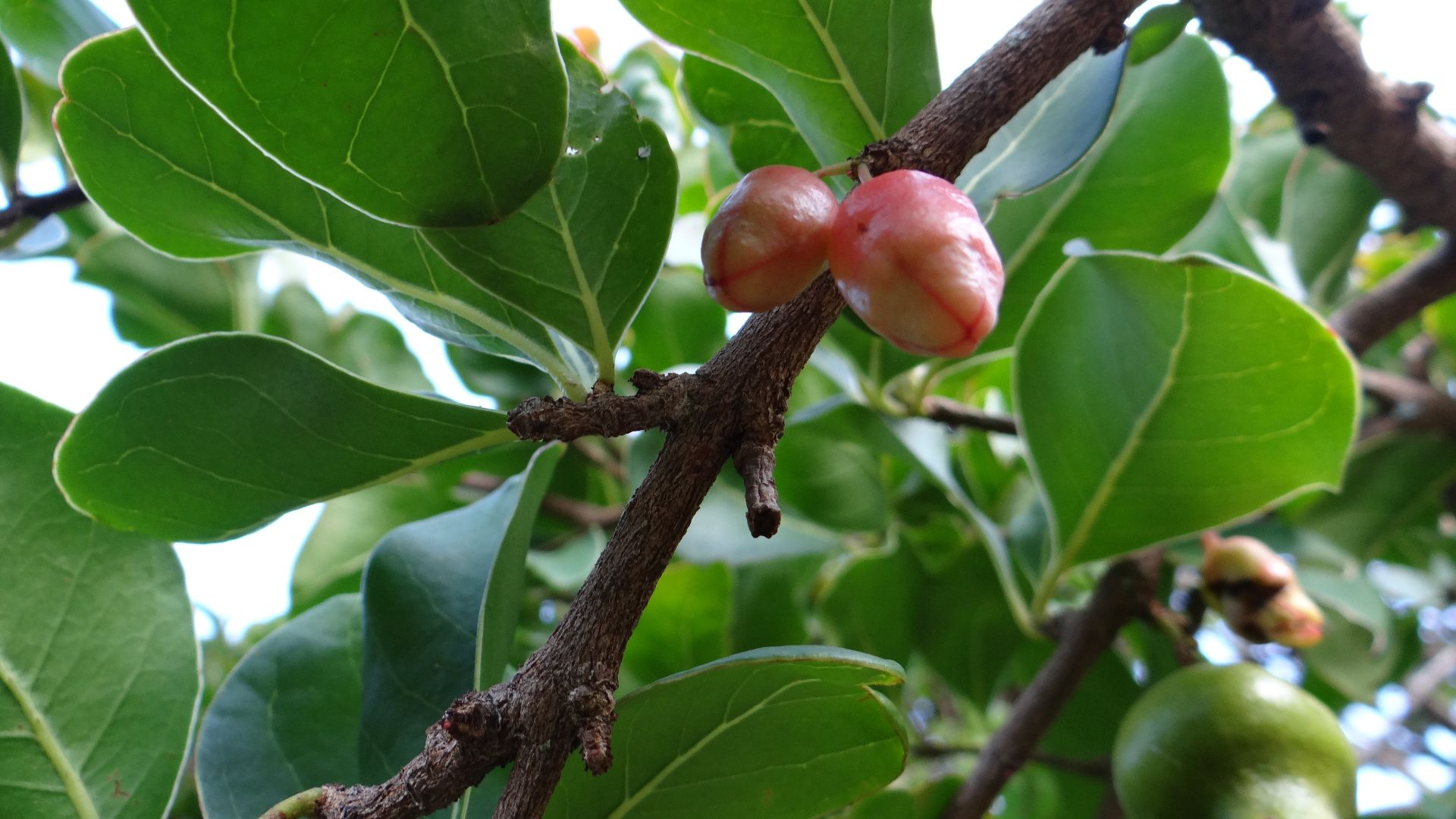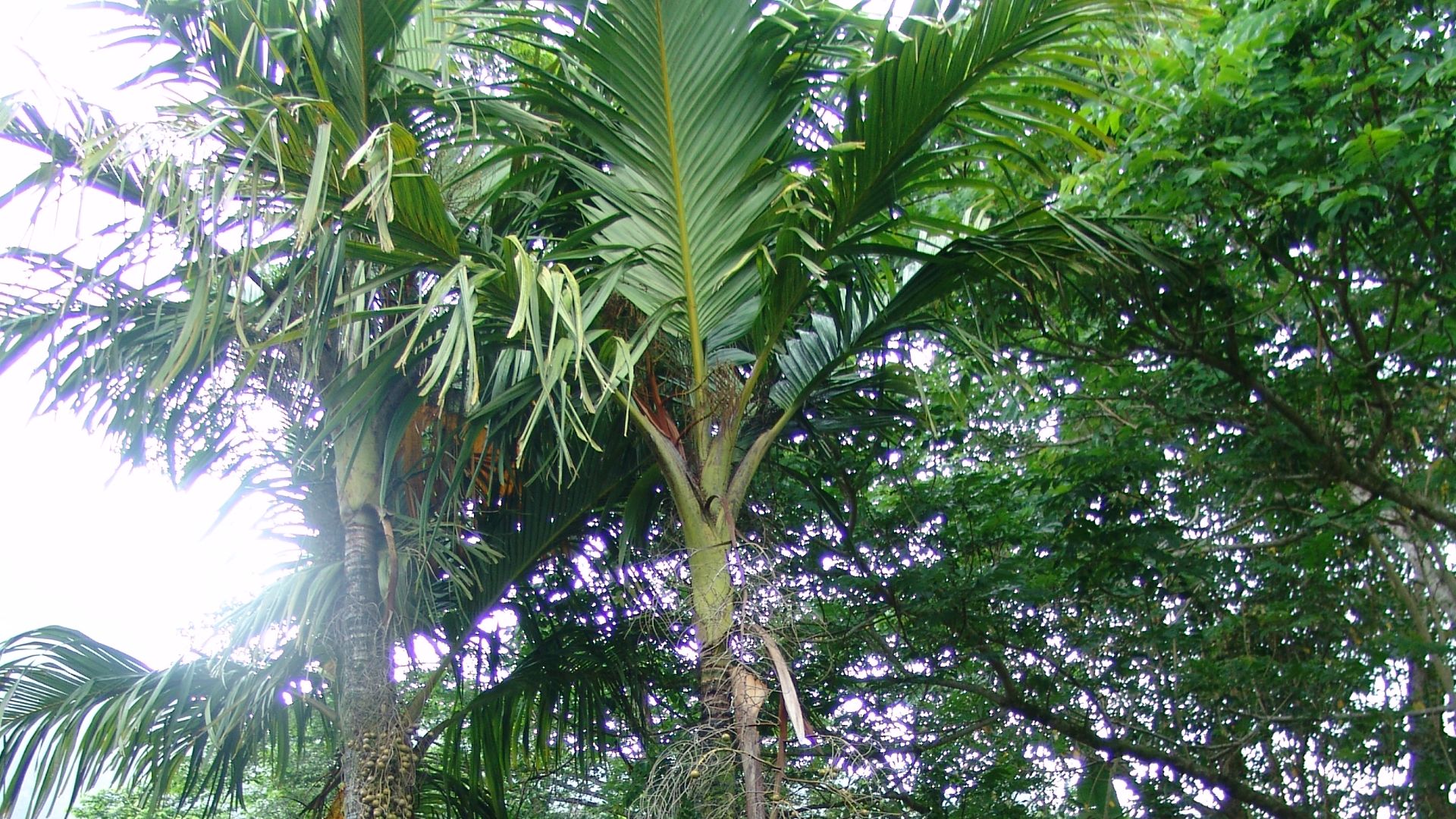Stories Grounded In Soil
Some trees stood unnoticed until they were gone, and ironically, that’s when scientists realized what they held together. Now, all we have are fragments of their stories.
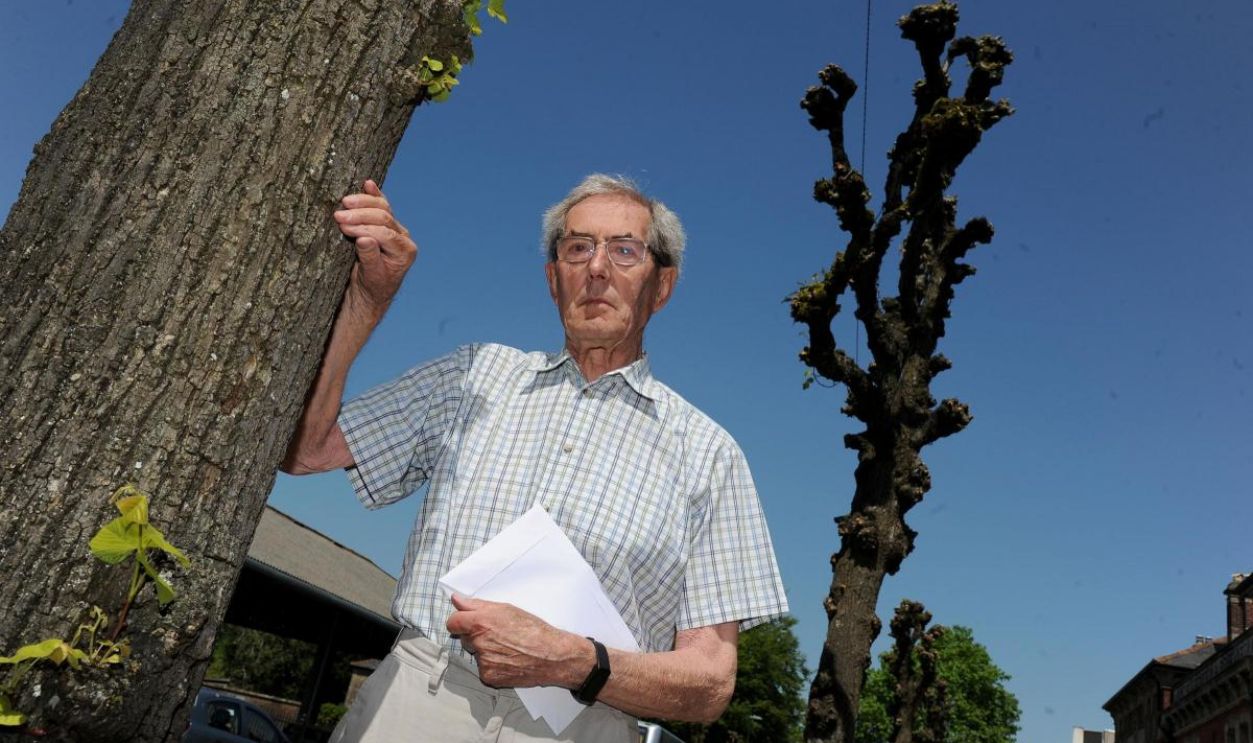
Florida Torreya (Torreya taxifolia)
Native to a narrow stretch of Florida and southern Georgia, the Florida Torreya is critically endangered. Once common along river bluffs, it has declined due to fungal disease and low seedling survival. Conservationists now rely on cloning and seed banking to preserve the species.
Toromiro Tree
Used in ceremonial carvings by Rapa Nui islanders, the Toromiro vanished from Easter Island in the 1960s. Overgrazing and deforestation destroyed its habitat. While it persists in botanical collections abroad, attempts to reintroduce it have failed due to poor soils and limited genetic diversity.
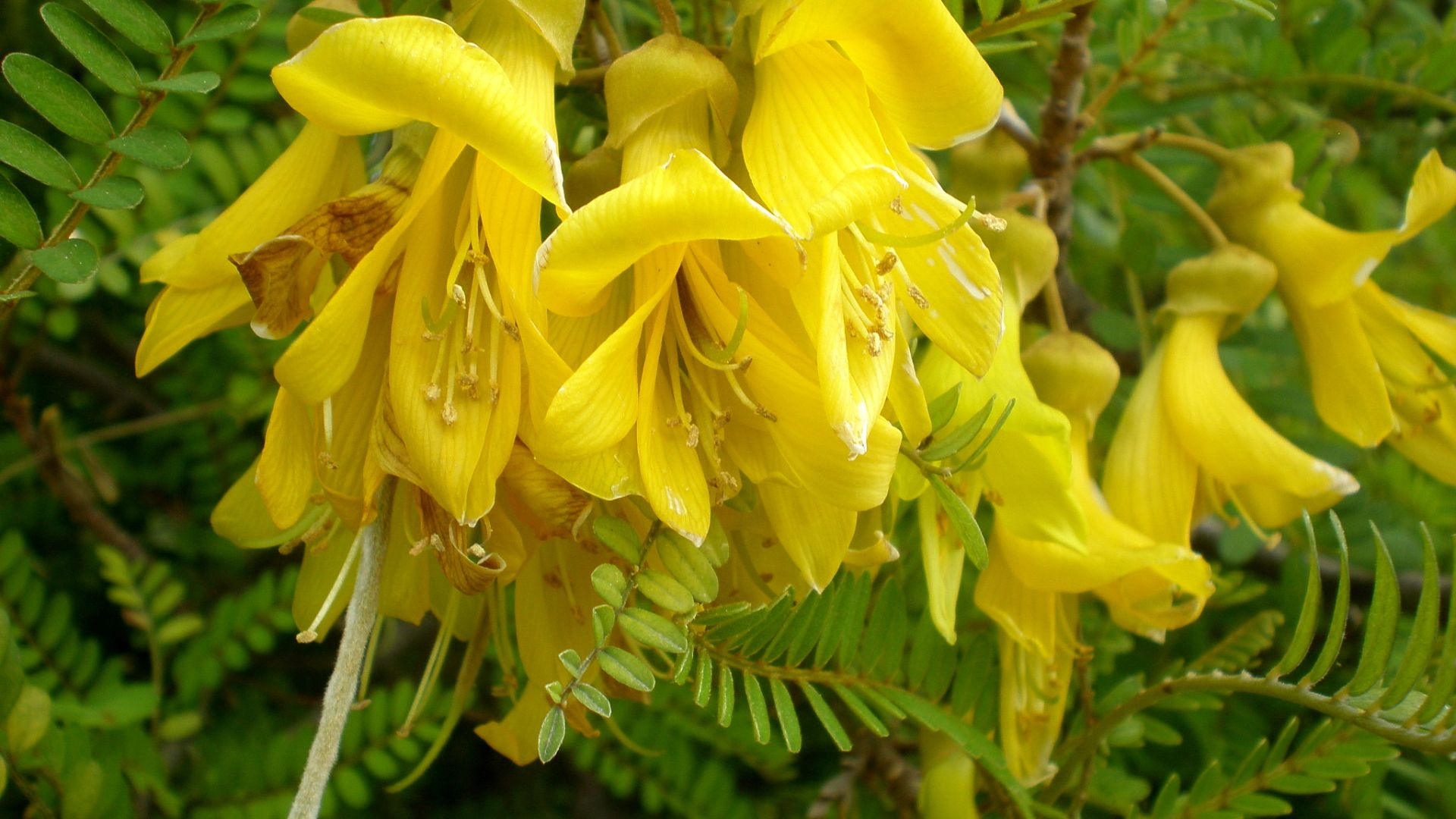 Consultaplantas, Wikimedia Commons
Consultaplantas, Wikimedia Commons
Saint Helena Olive
Native to St. Helena, this tree was last seen in the wild in 1994. Invasive flax and grazing goats devastated its habitat. And despite conservation efforts, garden-grown trees failed to reproduce. The species was officially declared extinct when the last cultivated specimen died in 2003.
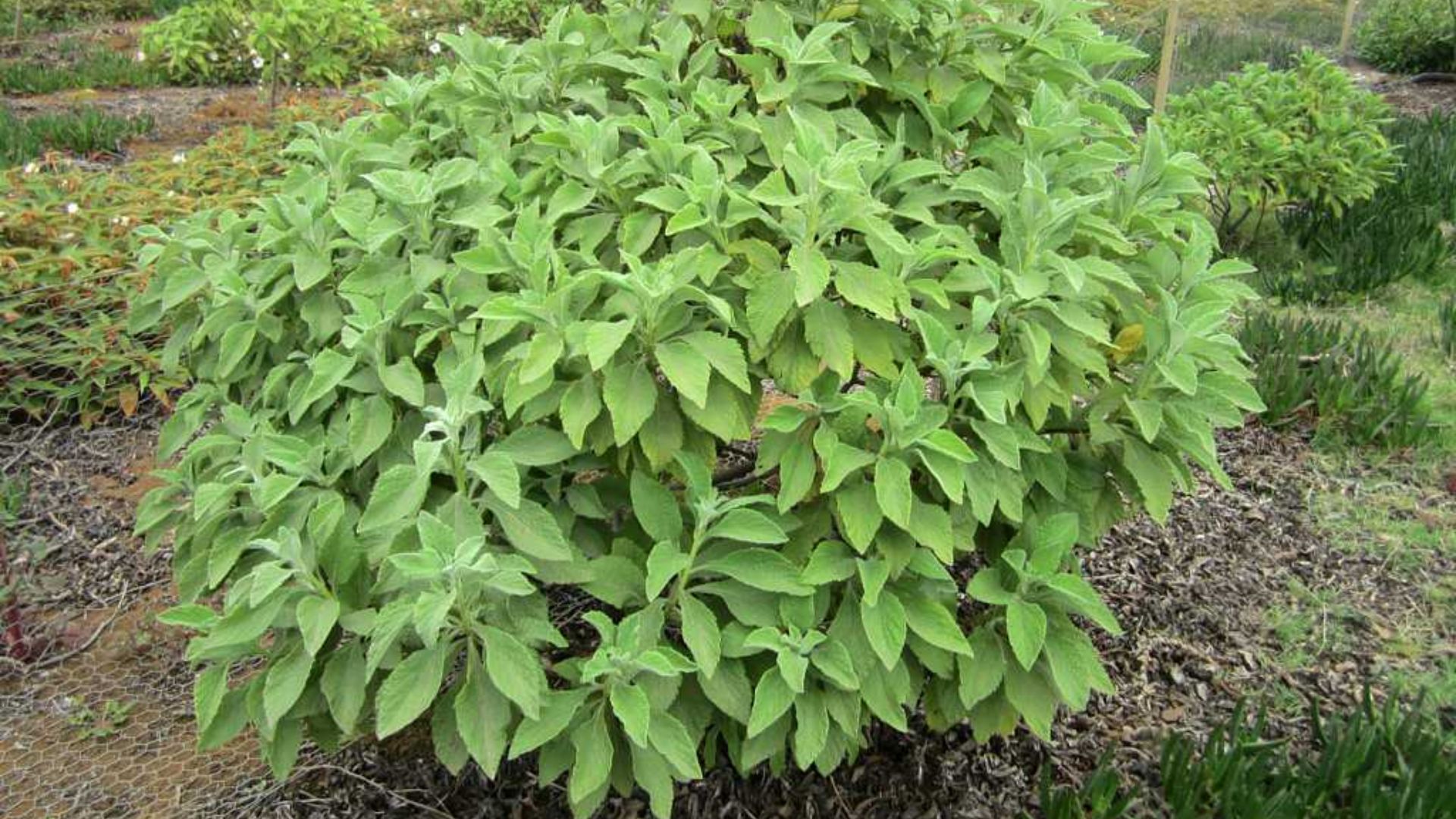 David Stanley from Nanaimo, Canada, Wikimedia Commons
David Stanley from Nanaimo, Canada, Wikimedia Commons
Saint Helena Gumwood
Once widespread on Saint Helena Island, this flowering plant also declined due to overgrazing and habitat loss. Although a few specimens persist in reserves, many populations have vanished entirely. Conservationists now depend on hand pollination and seed banking, as its slow reproduction hampers natural recovery in fragmented terrain.
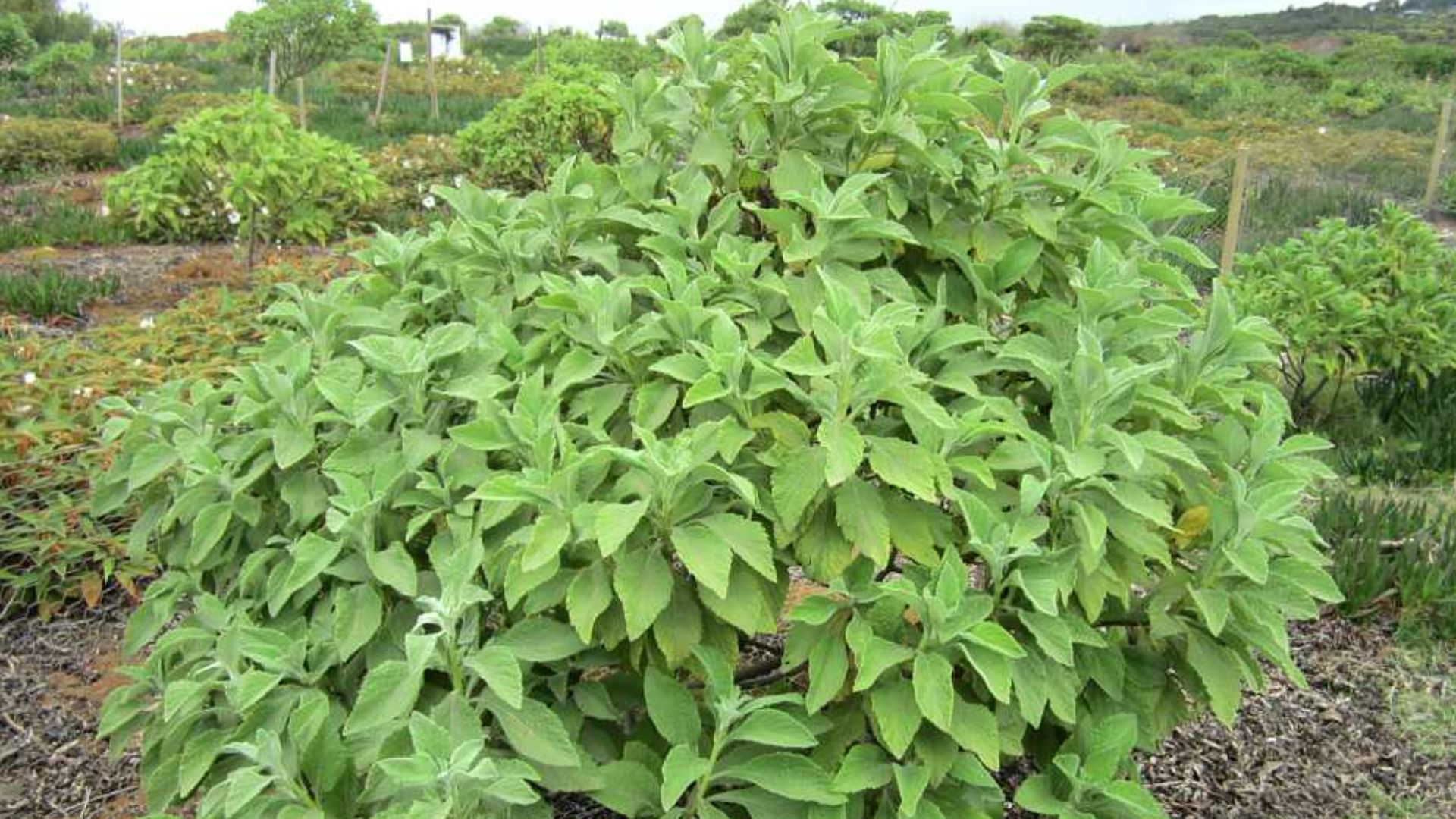 David Stanley from Nanaimo, Canada, Wikimedia Commons
David Stanley from Nanaimo, Canada, Wikimedia Commons
Bois Dentelle
Discovered in Mauritius during the 1990s, only two wild specimens were found. Invasive species, such as strawberry guava, have overtaken native habitats. And conservationists struggle to cultivate it, too. The species depends on rare microclimates that have largely disappeared, limiting chances for successful reestablishment.
Pennantia baylisiana
In 1945, a single female tree clinging to a cliffside greeted botanist Geoff Baylis on New Zealand’s remote Three Kings Islands. With no male to pollinate it, survival was impossible without help. Today, cuttings and seeds from self-pollination keep its lineage alive.
Hibiscadelphus woodii
The Hawaiian cliffs of Kauai once held the world’s only known Hibiscadelphus woodii. In the late 1990s, falling boulders decimated its population. Earlier threats had included invasive plants and feral goats. Rediscovered in 2019, a few specimens survive with active conservation efforts.
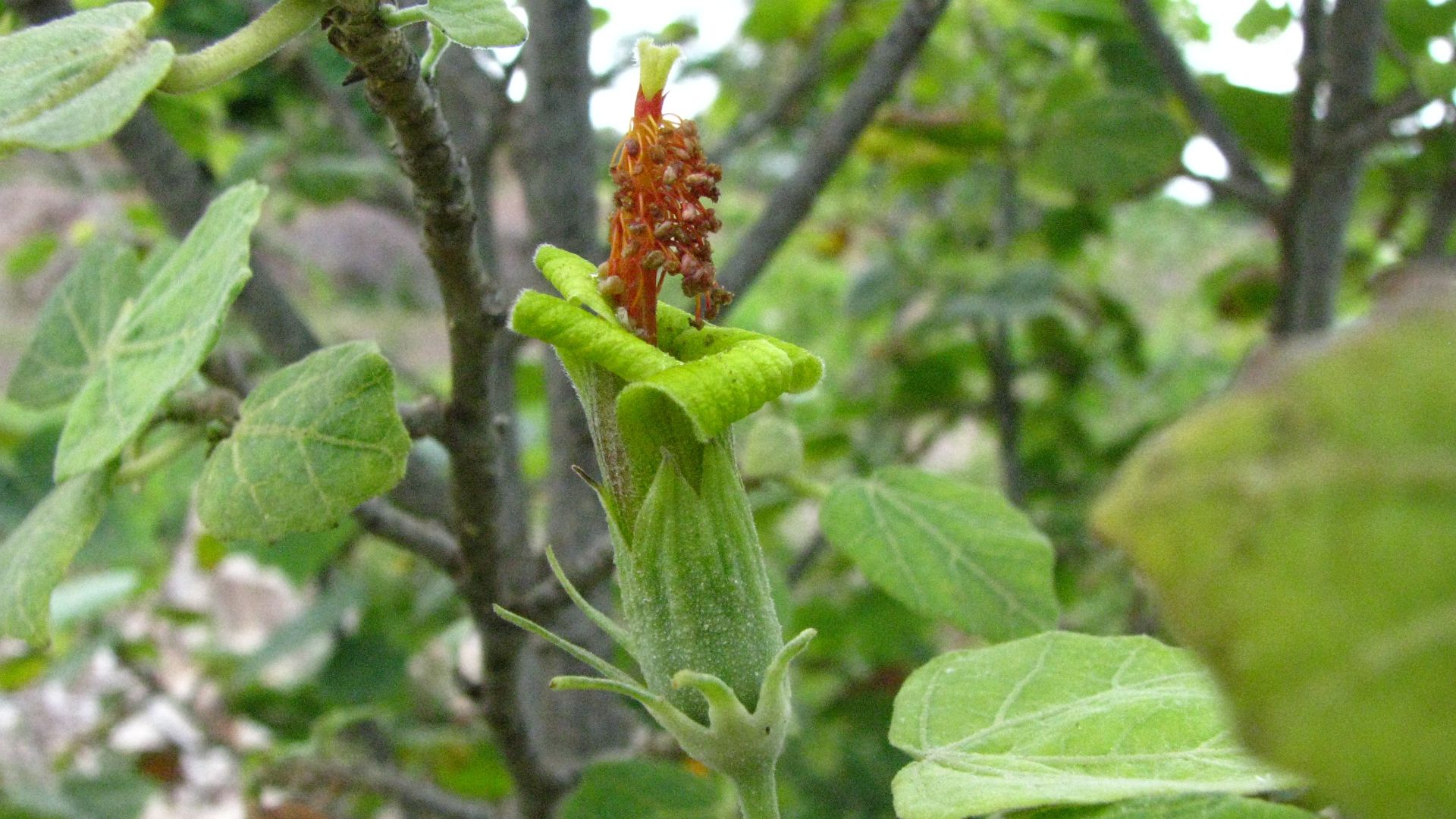 David Eickhoff from Pearl City, Hawaii, USA, Wikimedia Commons
David Eickhoff from Pearl City, Hawaii, USA, Wikimedia Commons
Olmsted Elm
Under Olmsted’s design, this elm once lined elegant American boulevards, which symbolized urban refinement. But by the 1930s, a fungus carried by bark beetles swept through city groves. Even iconic trees fell. Dutch Elm Disease erased decades of planning—and the very trees that shaped the streets themselves.
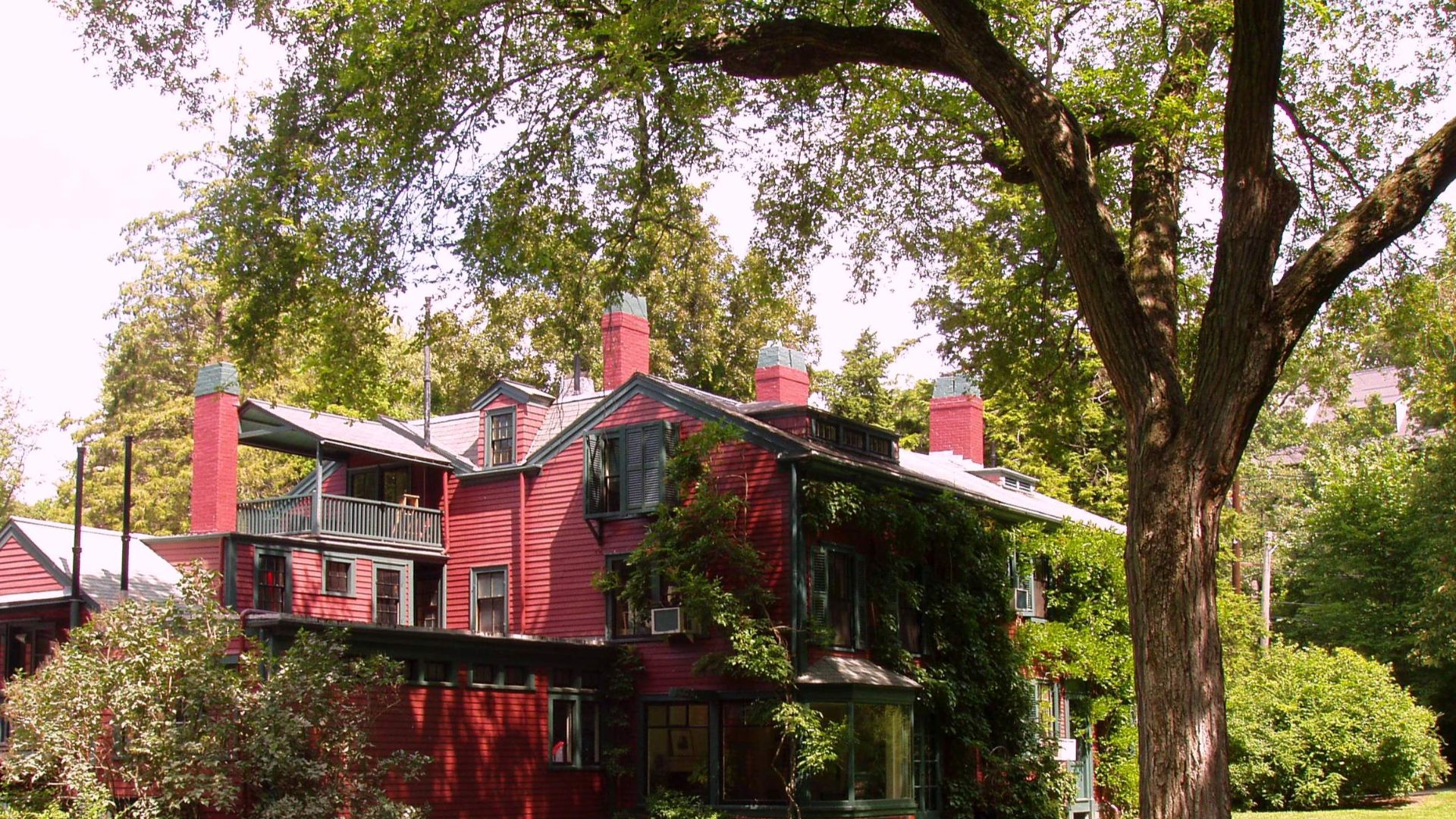 Original uploader was Daderot at en.wikipedia, Wikimedia Commons
Original uploader was Daderot at en.wikipedia, Wikimedia Commons
Calvaria Tree
Its extinction story was long tied to the dodo, falsely believed to be essential for seed germination. In reality, the decline of the Calvaria Tree followed forest clearing and poor seedling survival. Once common in Mauritius, it now survives only as a few aging individuals, unable to repopulate the area.
Hibiscadelphus giffardianus
First described in 1911, the last wild tree of this Hawaiian hibiscus species died in 1930; however, it persists in cultivation. Lava flows and grazing livestock decimated its limited habitat. Cultivated specimens are maintained in botanical gardens by preserving their genetic line despite their extinction in the wild.
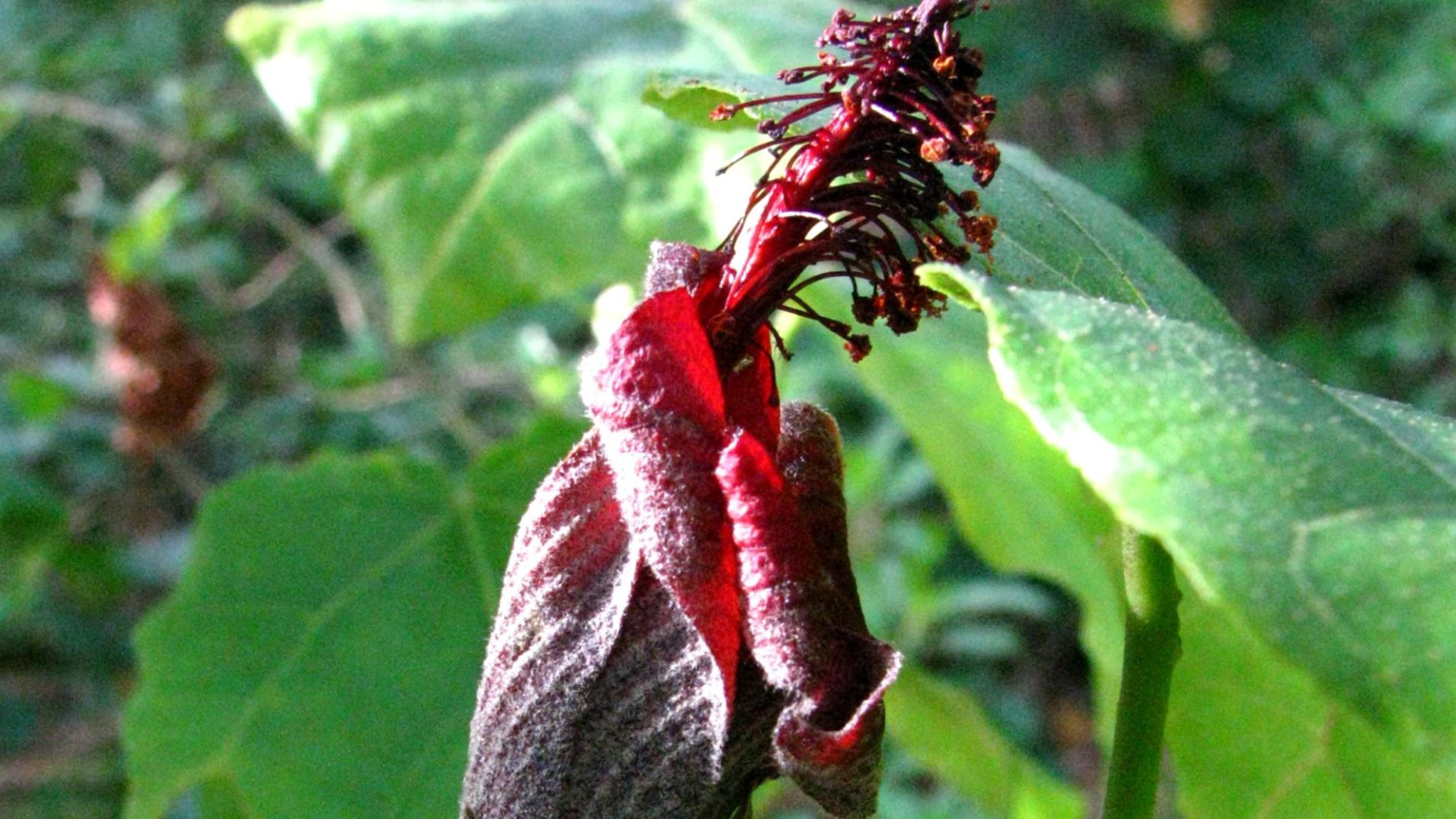 David Eickhoff from Pearl City, Hawaii, USA, Wikimedia Commons
David Eickhoff from Pearl City, Hawaii, USA, Wikimedia Commons
Monkey Puzzle Tree (Araucaria araucana)
The Monkey Puzzle Tree is native to south-central Chile and western Argentina. Endangered by logging and grazing, it is known for its unique, scale-like leaves and large edible seeds. It holds cultural value as Chile’s national tree and a living fossil species.
Plum Pine
This coniferous tree, native to Australia’s east coast, still survives in cultivation and remnant forests, though it once spanned wider subtropical woodlands. Logging and urbanization drastically reduced its habitat. That’s why today, it remains a living fossil from Gondwanan flora, valued for its edible, plum-like seeds.
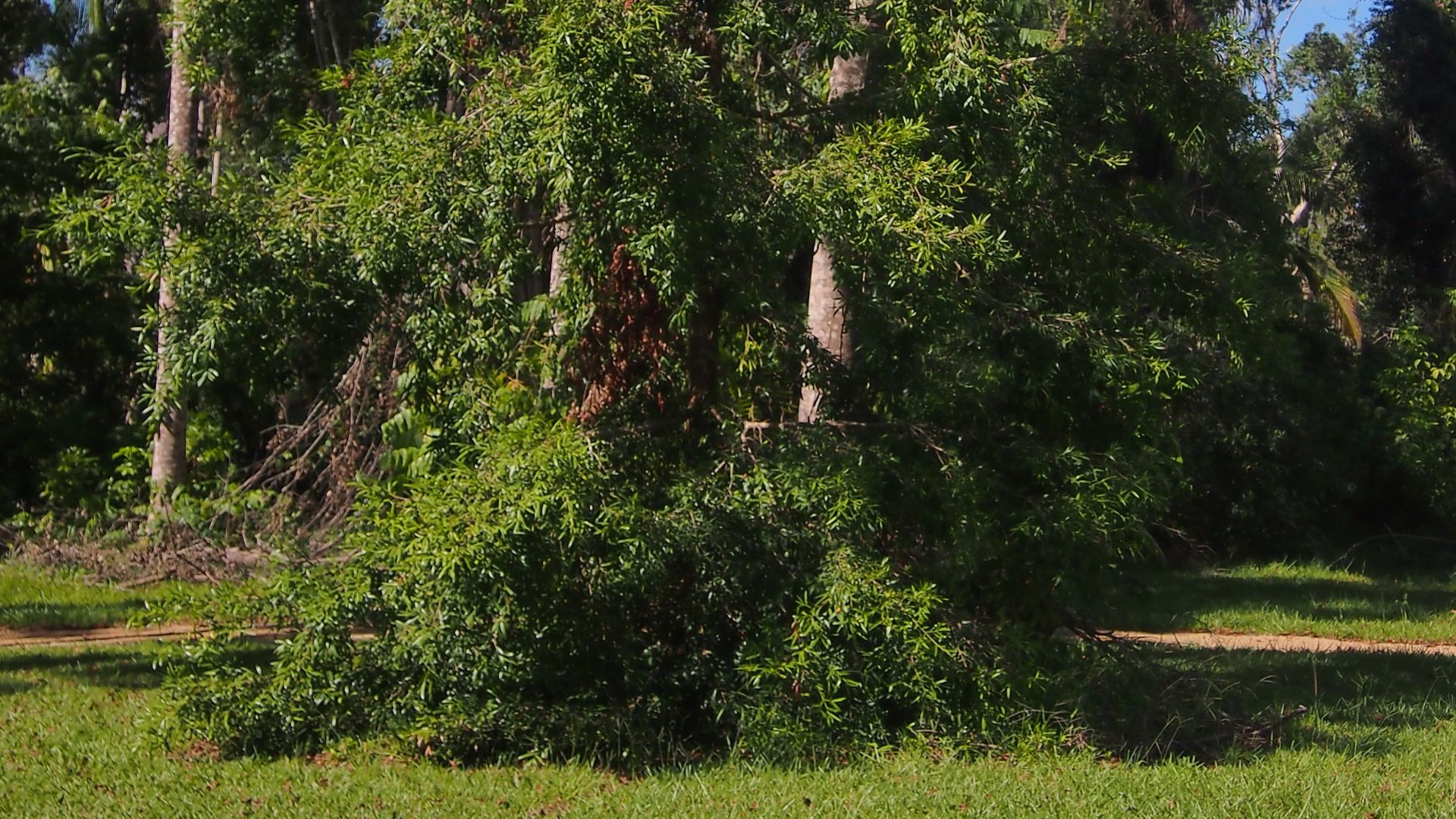 Mark Marathon, Wikimedia Commons
Mark Marathon, Wikimedia Commons
Camellia amplexicaulis
Collectors prized it in the past, which led to its quiet decline and eventual disappearance. Though once common in northern Vietnam, by the early 2000s, no wild specimens remained. Its former habitat has revealed nothing since. Cultivated versions persist, but the original gene pool appears to have been permanently erased from nature.
Java Cinnamon Tree (Cinnamomum blumei)
Cinnamomum blumei, native to Indonesia’s Java Island, has an unclear extinction status. It may be confused with Cinnamomum burmannii, which persists in cultivation. Overharvesting and habitat loss reduced its visibility in the wild, diminishing the genetic diversity of tropical lowland forest ecosystems.
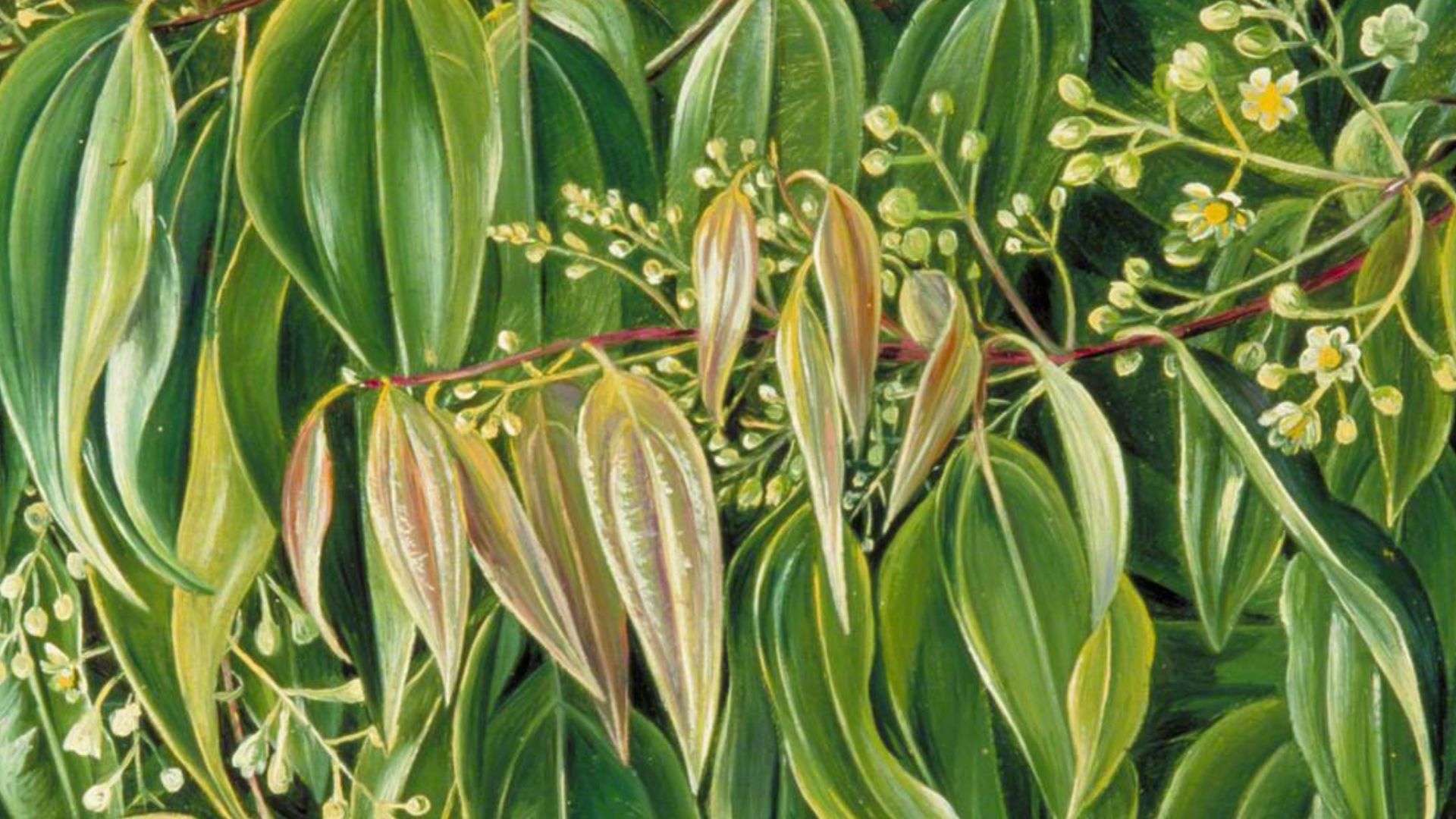 Marianne North, Wikimedia Commons
Marianne North, Wikimedia Commons
Ginkgo biloba (Wild Form)
Ginkgo trees still line streets worldwide, but wild populations do exist in China. While some groves were once thought to be ancient temple plantings, studies confirm naturally occurring populations in remote regions. Although it thrives in cultivation, its original role in the forest remains diminished in the modern landscape.
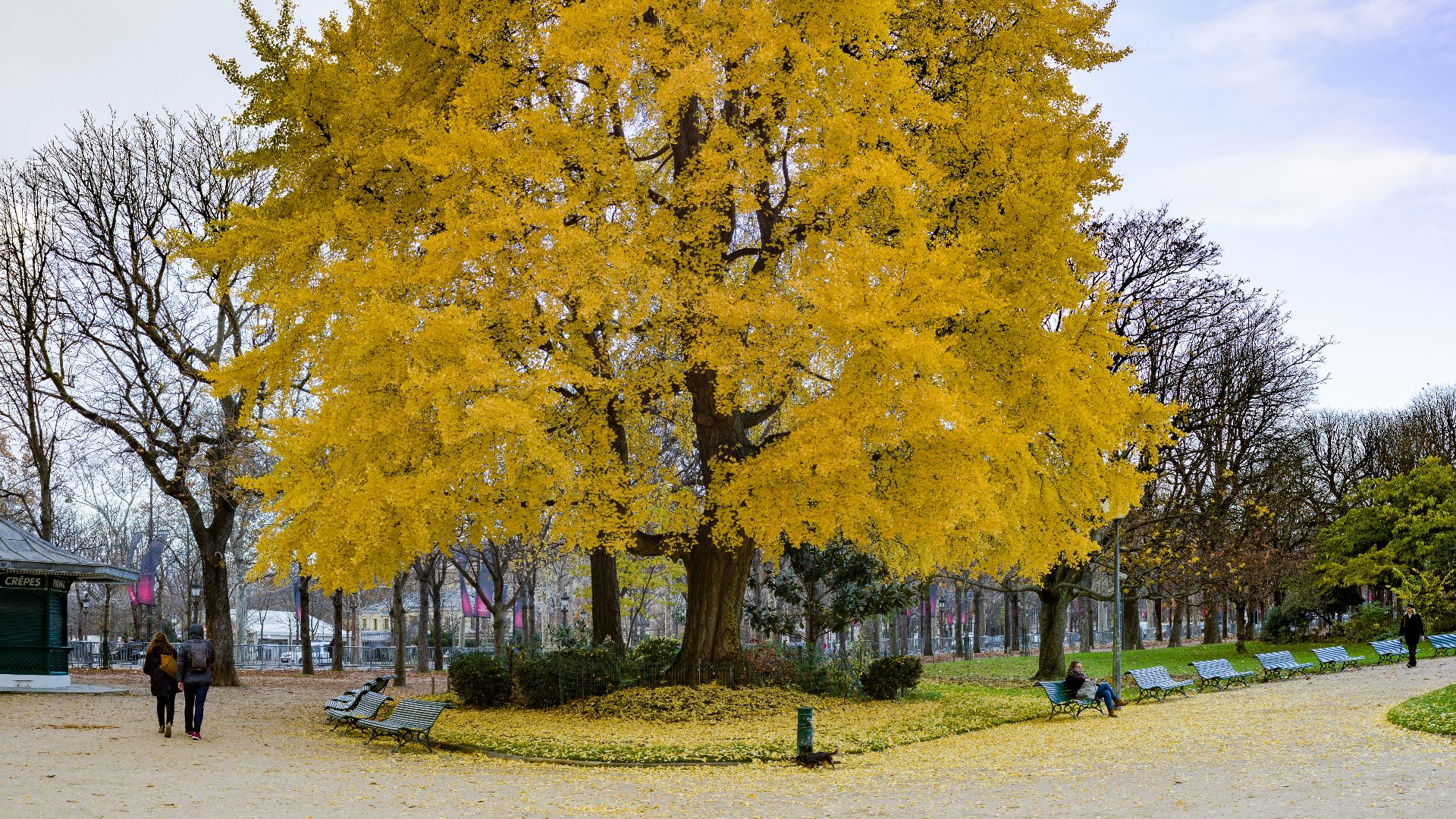 Wolfgang Moroder, Wikimedia Commons
Wolfgang Moroder, Wikimedia Commons
Elaeocarpus bojeri
This lacewood tree of Mauritius lost its foothold to invasive species like strawberry guava and Litsea monopetala. Fewer than 10 wild individuals survive, with multiple specimens in cultivation. Propagation efforts persist, but its sensitivity to environmental change makes reestablishment in the wild extremely difficult.
Waldstein’s Firethorn
Known from southeastern Europe, this firethorn species has not been documented in the wild in recent decades. Whether it is extinct or simply overlooked is still unclear. Habitat degradation and ornamental cultivation may have pushed it out of its natural range, while hybrids obscure its identification.
Saint Helena Redwood
Endemic to the island of St. Helena, this tall, straight-trunked tree was heavily logged for timber by settlers. Declared extinct in the wild by the 20th century, it now survives only in hybrid form. Conservationists continue to search for pristine specimens among the island’s rugged terrain.
Sigillaria
A towering relic of the Carboniferous Period, Sigillaria stood over 100 feet tall and dominated ancient coal swamps. Unlike modern trees, it reproduced through spores, not seeds. It disappeared around 300 million years ago and left behind fossilized impressions that shaped today’s global coal reserves.
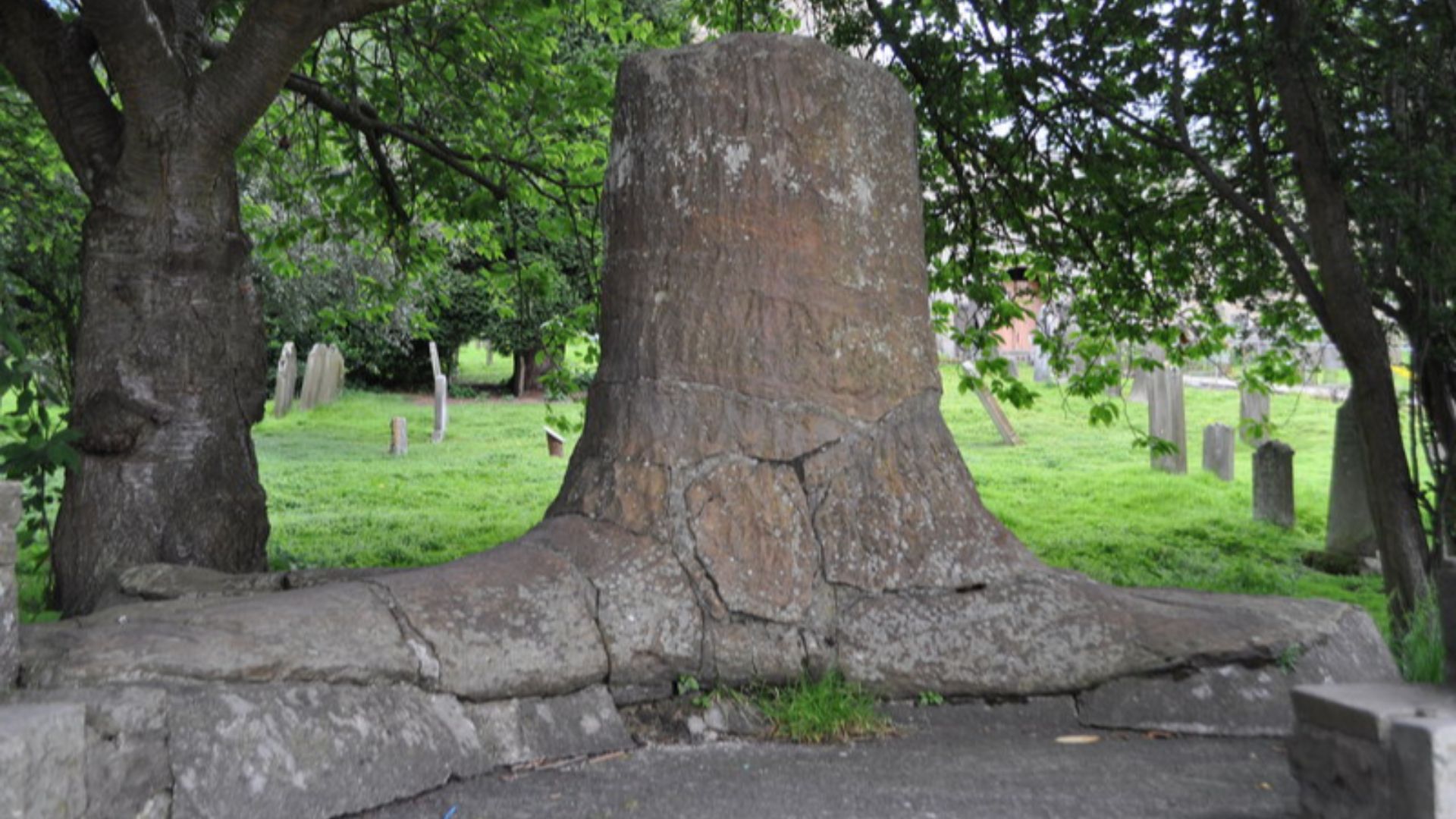 Ashley Dace, Wikimedia Commons
Ashley Dace, Wikimedia Commons
Kokia cookei
Declared extinct in the wild by the 1950s, this Hawaiian tree from Molokai lost its habitat to agriculture and grazing. In the 1970s, a branch was grafted onto a related species, and even today, every living specimen traces back to that final, salvaged remnant.
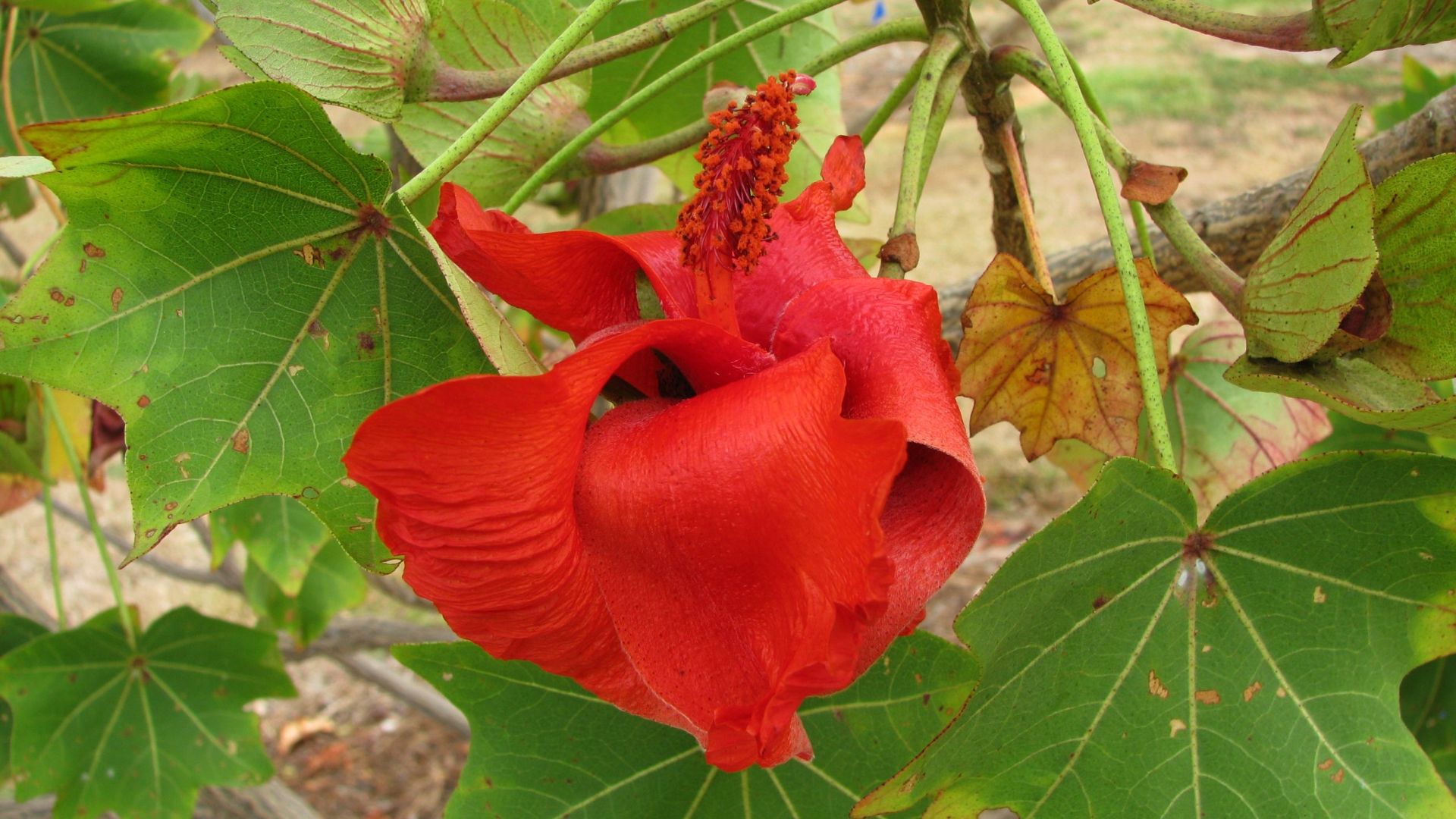 David Eickhoff from Pearl City, Hawaii, USA, Wikimedia Commons
David Eickhoff from Pearl City, Hawaii, USA, Wikimedia Commons
Dadoxylon
Known from fossilized wood across multiple continents, Dadoxylon once formed expansive forests in the late Paleozoic era. Its extinct conifer-like trees reveal early gymnosperm traits. These plants shaped prehistoric ecosystems and contributed heavily to the coal deposits that fuel our modern world.
Socotran Pomegranate
Conservationists face harsh terrain and limited access as they work to preserve the Socotran pomegranate’s lineage. Found only on Yemen’s Socotra Island, this wild ancestor of the common pomegranate stands out for its pale pink blooms. Habitat degradation and goat browsing have brought it dangerously close to extinction.
Grandidier's Baobab (Adansonia grandidieri)
With its iconic silhouette and massive trunk that stores water, Grandidier's Baobab stands out among Madagascar's flora. Though endemic to the island's west, its habitat is shrinking fast. Overexploitation and fire remain major threats while expanding human activity continues to fragment its fragile native range.
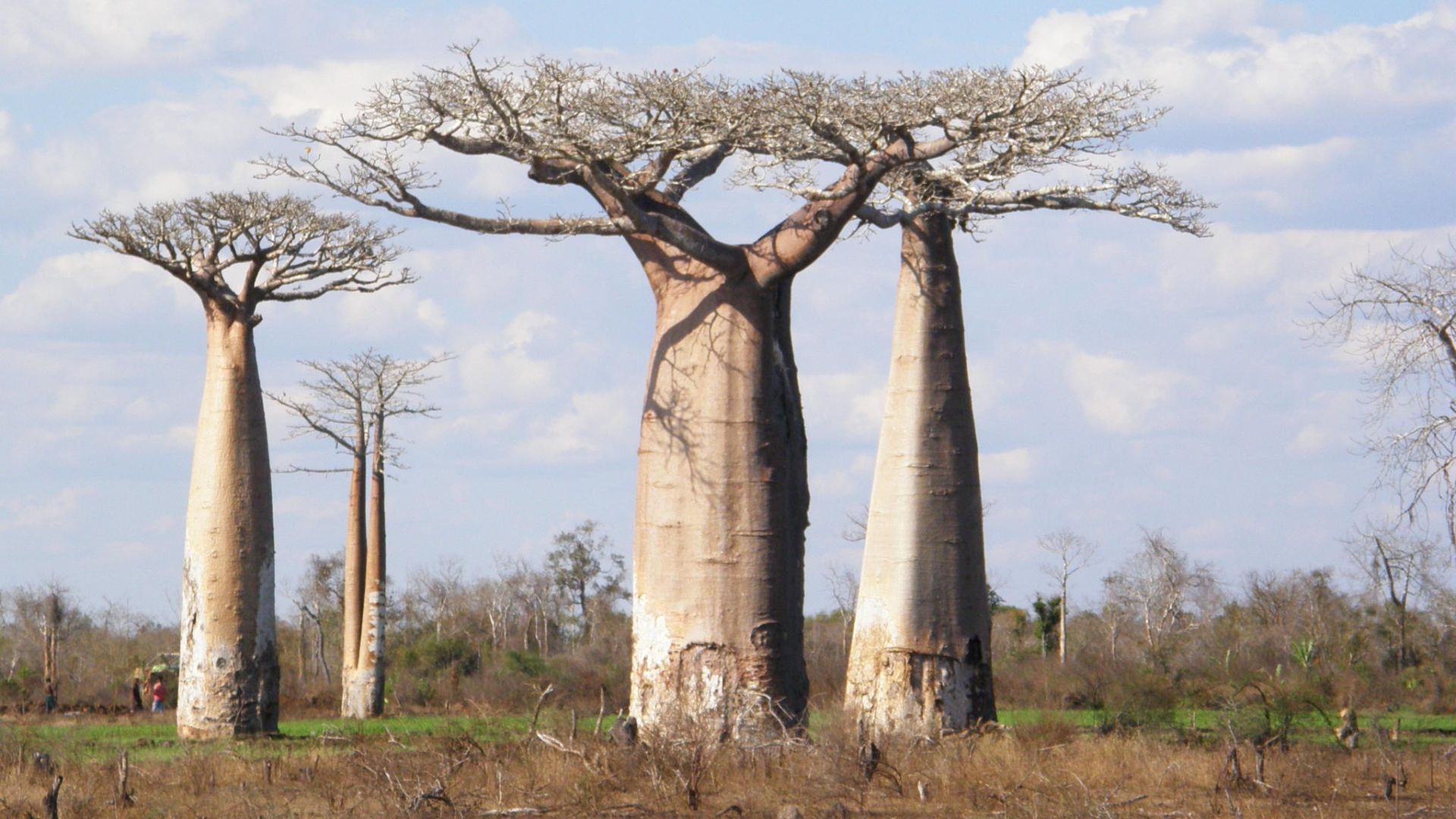 Rafael Medina, Wikimedia Commons
Rafael Medina, Wikimedia Commons
Seychelles Stilt Palm
This rare palm, native to the Seychelles, grows on steep slopes with dramatic stilt-like roots. Logging and agriculture have reduced its natural range. Though still found on several islands, it is listed as “Near Threatened,” and its ecological role highlights the need for ongoing monitoring and habitat protection.
Lepidodendron
Nicknamed the "scale tree" for its diamond-patterned bark scars resembling reptile skin, this one thrived in Carboniferous coal swamps. They exceeded 30 meters and reproduced via spores. Though declining in Euramerica, they survived in Cathaysia until the Permian's end, around 252 million years ago.
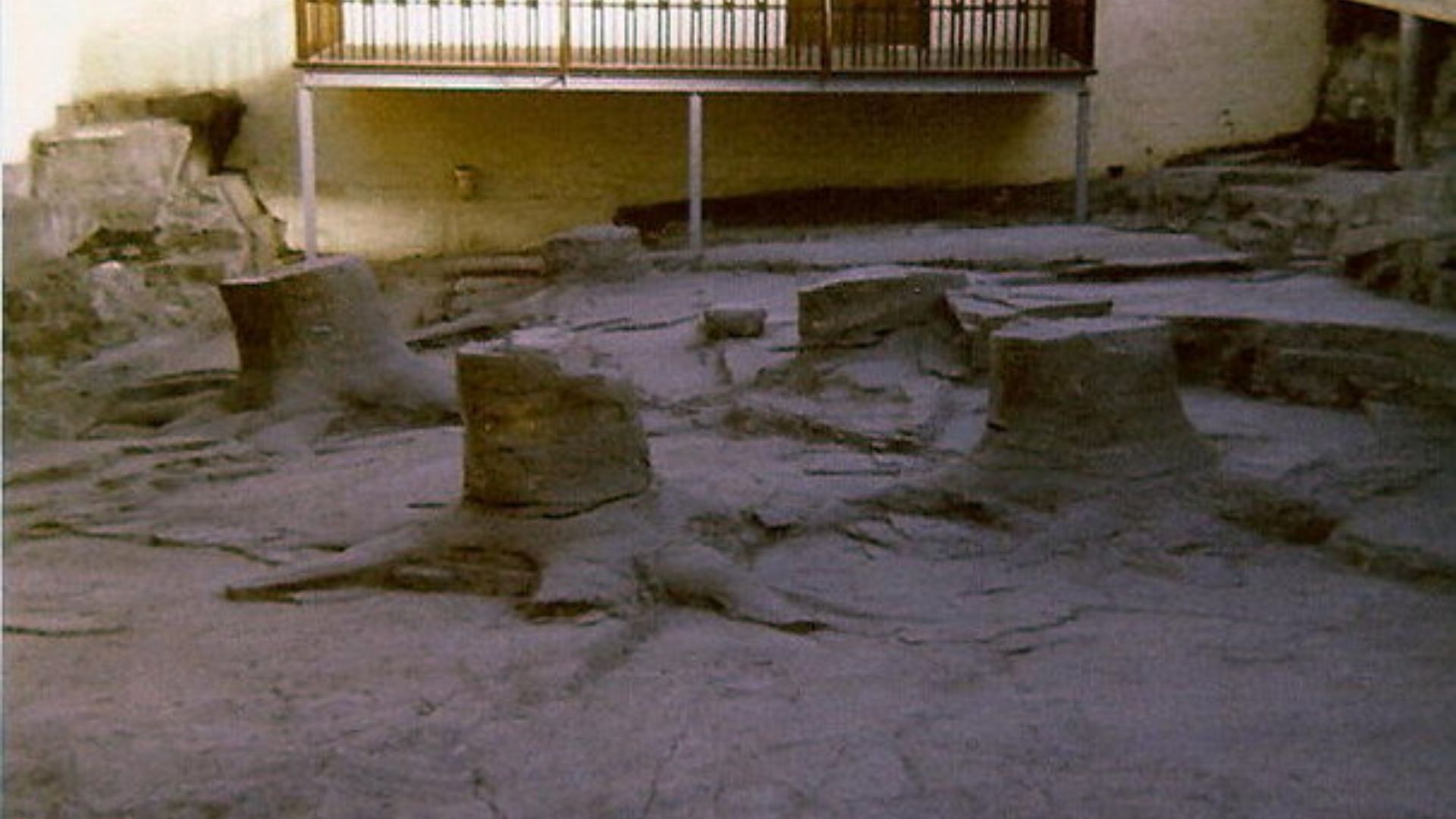 Elliott Simpson https://www.geograph.org.uk/profile/11965, Wikimedia Commons
Elliott Simpson https://www.geograph.org.uk/profile/11965, Wikimedia Commons

